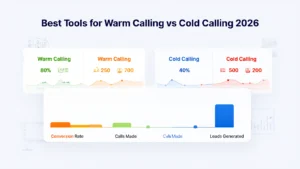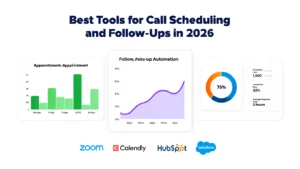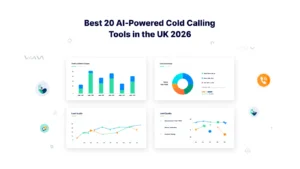Sales training remains one of the most significant investments for companies worldwide. In 2023, global spending on corporate training reached $104 billion, with sales training accounting for nearly 14% of total budgets. Yet, effectiveness is under sharp scrutiny: a 2024 LinkedIn Learning report found that only 25% of organizations measure long-term impact of training, despite widespread investment. Meanwhile, companies that align training with sales outcomes report 15% higher win rates compared to those without structured programs.
This blog is built as a central reference point for anyone seeking reliable sales training effectiveness statistics. The intention is to compile validated numbers, highlight emerging findings from credible studies, and give researchers, analysts, and corporate leaders a single place to cite when examining how sales training influences performance.
Moving forward, we will:
- Define what measuring means in the context of sales training.
- Present segmented data: short-term vs. long-term impact, ROI measurement, regional comparisons, and digital vs. in-person training effectiveness.
- Provide supporting stats from 2022–2024 corporate learning studies, government labor reports, and sales enablement benchmarks.
Measuring Sales Training Effectiveness Statistics

Sales training programs absorb billions in corporate spending, yet many organizations still fail to track outcomes effectively. Without measurement, organizations risk treating training as a cost rather than an investment. Studies in 2023 showed that companies evaluating training ROI were 35% more likely to report revenue growth above their industry average.
Global Spending Trends in Sales Training Effectiveness Statistics (2022–2024)
The global corporate training market continues to grow, with sales training occupying a consistent share of budgets. But the real story lies in how companies connect spending to measurable effectiveness.
Rising Budgets but Uneven Outcomes
Corporate learning expenditures worldwide reached $104 billion in 2023, according to Training Industry data. Sales training accounts for 12–14% of this total, making it one of the largest specialized categories. Yet, an ATD 2023 report found that only 29% of companies evaluate effectiveness beyond knowledge retention, leaving a significant gap between investment and outcomes.
- 2022: Global training spend at $92 billion; sales training ~ $11.5 billion.
- 2023: Increased to $104 billion; sales training ~ $13.5 billion.
- 2024 (projected): Expected to surpass $110 billion, with sales training forecast at ~$15 billion.
This steady rise highlights both the demand for better-trained sales professionals and the challenge of proving return on investment.
Regional Spending Patterns
Regional differences show how priorities vary:
- North America: Highest investment, averaging $1,250 per salesperson annually.
- Europe: Reports smaller per-person spend ($950), but higher adoption of digital learning tools.
- Asia-Pacific: Fastest growth rate (CAGR ~9% between 2022–2024), with companies prioritizing blended learning formats.
The shift in Asia-Pacific reflects both workforce expansion and the rapid adoption of digital-first training strategies.
Training Format Shifts and Effectiveness
The effectiveness of training is strongly influenced by delivery format:
- Virtual Instructor-Led Training (VILT): Adoption rose from 38% in 2022 to 47% in 2023, with 72% of companies reporting equal or better outcomes compared to in-person.
- Self-Paced eLearning: Growth plateaued at ~35% usage, with mixed effectiveness ratings (only 41% of learners say it improves on-the-job performance).
- Hybrid Approaches: Blended learning shows the strongest link to sales performance, with companies using hybrid formats reporting 19% higher quota attainment rates.
These spending and adoption patterns demonstrate that how money is invested matters as much as how much is invested when assessing sales training effectiveness.
Measuring ROI in Sales Training Effectiveness Statistics
A central question around sales training is whether it delivers a return on investment (ROI) that justifies the billions spent each year. Organizations increasingly demand quantifiable proof that training links directly to revenue growth, productivity, or customer outcomes.
How Companies Define ROI
ROI in sales training is not one-dimensional. Recent surveys highlight the following common metrics used to evaluate effectiveness:
- Sales Performance Metrics: Quota attainment, revenue per rep, win rates.
- Behavioral Change: Adoption of sales methodologies, usage of CRM tools, improved call quality.
- Productivity Indicators: Ramp-up time for new hires, reduction in sales cycle length.
- Financial ROI: Direct correlation between training spend and sales growth.
According to ATD’s 2023 State of Sales Training report, 62% of companies track at least one of these outcomes, but only 27% measure ROI comprehensively across both financial and behavioral dimensions.
ROI Benchmarks and Results
Fresh data from 2023–2024 shows wide variation in ROI outcomes:
- Companies with structured ROI measurement report a 353% average ROI on sales training investments.
- Firms without measurement frameworks often fail to connect training spend with performance improvements, with over 40% unable to quantify results at all.
- A McKinsey 2023 analysis showed that sales teams receiving ongoing reinforcement training outperform those with one-time programs by up to 22% in revenue growth.
| ROI Measurement Approach | % of Companies (2023) | Reported Effectiveness |
| Financial ROI only | 19% | Moderate (average 1.8x return) |
| Behavioral + Performance ROI | 27% | High (average 3.5x return) |
| No ROI tracking | 41% | Unclear impact |
Why ROI Tracking Remains a Challenge
Despite clear benefits, barriers remain:
- Time and cost: 38% of L&D leaders say ROI measurement is too resource-intensive.
- Attribution problems: Sales success is influenced by multiple factors, making it difficult to isolate training impact.
- Data silos: Inconsistent alignment between sales enablement, HR, and finance teams.
Companies that overcome these challenges by integrating training data with CRM and sales performance systems see stronger results. Research in 2024 highlighted that firms embedding learning metrics into their CRM workflows were 2.3x more likely to report above-average win rates.
Short-Term vs. Long-Term Effectiveness of Sales Training

Sales training effectiveness can’t be evaluated solely at the moment of delivery. While short-term gains often show immediate knowledge retention and confidence boosts, the real measure lies in sustained behavior change and long-term revenue impact.
Short-Term Training Effectiveness
Short-term impact is usually measured within the first 90 days of training. Common indicators include:
- Knowledge Retention: 74% of employees report feeling more confident in their sales approach immediately after training (ATD, 2023).
- Faster Ramp-Up: New sales hires with structured onboarding programs reach productivity 25% faster compared to those with informal training (Gartner, 2023).
- Motivation Spike: In post-training surveys, 68% of learners say they feel more motivated to apply new skills — though only 44% sustain application beyond three months.
These outcomes show that while initial engagement is strong, without reinforcement many benefits taper quickly.
Long-Term Training Effectiveness
The long-term view (6–24 months post-training) paints a different picture. Effectiveness here depends heavily on reinforcement and integration into daily workflows. Key findings from 2023–2024 studies include:
- Sales teams receiving reinforcement training every quarter achieve 34% higher quota attainment compared to those trained once annually.
- Long-term ROI improves significantly with coaching: organizations with formal coaching programs report 33% higher revenue per salesperson (LinkedIn Learning, 2024).
- A 2024 analysis showed that when training is tied to role-specific practice, knowledge retention rises by 47% after one year.
Why the Gap Exists
The gap between short-term gains and long-term results can be explained by:
- Forgetting Curve: Without reinforcement, employees forget up to 70% of training content within one week.
- Lack of Application: If managers don’t integrate training lessons into workflows, learned behaviors fade.
- Evolving Market Conditions: Sales strategies need updating; static training quickly loses relevance.
The most effective programs today address this by combining microlearning, ongoing coaching, and technology-driven reinforcement tools. This approach bridges the gap between initial impact and sustained sales performance.
Regional Comparisons in Sales Training Effectiveness Statistics
While sales training is a global priority, effectiveness varies significantly by region due to cultural differences, budget allocations, and adoption of digital learning.
North America: High Investment, High Scrutiny
North America remains the largest market for sales training. In 2023, companies here spent an average of $1,250 per salesperson annually. Effectiveness measures, however, are stricter than in other regions.
- 57% of U.S. firms track sales performance metrics post-training, compared to a global average of 41%.
- Companies integrating CRM data with training outcomes report 20% faster sales cycles.
- Despite high investment, only 31% of U.S. firms rate their training as “highly effective” over the long term.
Europe: Moderation and Digital Adoption
European firms spend less per head (about $950 annually per salesperson), but adoption of digital-first training formats is higher.
- 46% of European organizations prefer virtual instructor-led training (VILT) compared to 39% globally.
- Effectiveness scores are higher for blended approaches, with quota attainment up 17% among teams using hybrid learning.
- Language and cultural adaptation remain key; localized programs see 24% higher learner satisfaction than standardized ones.
Asia-Pacific: Rapid Growth, Strong Outcomes
The Asia-Pacific region is the fastest-growing market, with sales training spend growing at 9% CAGR (2022–2024). Companies here prioritize flexible and hybrid learning formats.
- Sales teams in APAC using mobile-first training solutions report 28% higher engagement.
- Firms that invest in quarterly reinforcement sessions achieve 36% higher quota attainment, one of the strongest regional correlations between training and performance.
- Budget allocations are smaller than in North America but often used more efficiently, with a higher ROI per dollar spent due to scale and adoption of digital learning.
Latin America & Middle East: Emerging Focus
While spending is lower, interest in structured training is rising. In Latin America, adoption of digital training grew by 42% between 2022 and 2023, driven by remote-first business models. In the Middle East, companies are integrating sales training with customer experience strategies, linking training to customer retention improvements of up to 18%.
The Role of Digital Tools in Sales Training Effectiveness Statistics
Digital platforms are now at the center of sales training delivery. From AI-driven coaching apps to virtual classrooms, the format in which training is delivered has a direct effect on effectiveness.
Growth of Digital Training Adoption
Between 2022 and 2023, digital training adoption surged, with 47% of companies using Virtual Instructor-Led Training (VILT) as their primary method (up from 38% in 2022). Meanwhile, 35% of companies relied on self-paced eLearning, although effectiveness scores remain mixed.
- Mobile-first learning adoption rose by 23% in 2023, especially in Asia-Pacific, where smartphone penetration supports flexible training formats.
- AI-driven role-play platforms gained traction in 2024, with early data showing up to 21% improvement in call quality scores when compared to traditional methods.
Comparing Digital vs. In-Person Effectiveness
Effectiveness varies depending on how digital tools are integrated:
- In-Person Training: Still rated as highly engaging, but cost-intensive and less scalable. Learner satisfaction: 82%.
- VILT (Virtual Instructor-Led): Rated nearly equal in effectiveness to in-person (learner satisfaction 79%), with the added advantage of accessibility.
- Self-Paced eLearning: Less effective without reinforcement. Only 41% of learners report improved performance after relying solely on eLearning.
- Blended Learning (Hybrid): Consistently highest outcomes, with quota attainment 19% higher than single-format programs.
Why Digital Matters for Long-Term ROI
Digital platforms support reinforcement, tracking, and personalization—key drivers of long-term training effectiveness:
- Analytics Integration: 54% of organizations in 2023 used LMS or CRM-linked dashboards to measure impact.
- Microlearning Modules: Bite-sized learning improved retention by 34% after six months.
- Gamification: Programs with game-based elements showed 22% higher engagement rates.
The evidence suggests that digital tools are not just convenient—they are increasingly critical for scaling training and sustaining measurable outcomes.
Sales Manager Involvement in Training Effectiveness Statistics

Sales managers play a decisive role in whether training translates into measurable results. Research shows that when managers actively support and reinforce training, outcomes improve significantly compared to programs delivered without follow-up.
The Manager’s Role in Reinforcement
ATD’s 2023 report revealed that up to 70% of training effectiveness depends on reinforcement after the initial session. Sales managers are uniquely positioned to:
- Provide coaching and feedback tied to training concepts.
- Model desired behaviors in customer interactions.
- Hold teams accountable for applying new skills.
In fact, LinkedIn Learning’s 2024 survey found that teams with engaged managers were 1.4x more likely to exceed quota attainment.
Statistics on Manager Engagement and Effectiveness
Fresh benchmarks highlight the importance of sales manager involvement:
- Ongoing Coaching: Companies where managers conduct regular coaching sessions see 33% higher revenue per salesperson.
- Manager-Led Reinforcement: When managers facilitate follow-up workshops, training retention after six months increases by 47%.
- Performance Correlation: Teams with high coaching consistency achieved 28% higher win rates compared to teams with sporadic or no coaching.
| Factor | Effect on Training Outcomes |
| Weekly coaching sessions | +28% win rates |
| Manager-led follow-up workshops | +47% retention after 6 months |
| CRM-integrated coaching feedback | +32% faster sales cycles |
Barriers to Manager Involvement
Despite the clear benefits, many organizations struggle to involve managers effectively:
- Time pressure: 61% of sales managers report limited bandwidth for coaching.
- Skill gaps: Not all managers are trained in coaching techniques themselves.
- Measurement issues: Lack of tracking systems makes it difficult to evaluate coaching quality.
Organizations addressing these challenges—by training managers as coaches and linking coaching sessions to CRM data—report consistently stronger ROI from their sales training investments.
Industry-Specific Sales Training Effectiveness Statistics
While sales training principles apply broadly, effectiveness varies by industry depending on sales cycle complexity, regulatory environments, and customer expectations.
Technology and SaaS
The technology sector invests heavily in training due to rapid product innovation and competitive markets.
- In 2023, SaaS companies allocated 16% of sales budgets to training, the highest of any sector.
- Teams that used ongoing reinforcement saw 23% higher renewal rates, a critical metric in subscription models.
- A 2024 benchmark revealed that SaaS firms integrating role-play simulations with AI coaching improved deal closing rates by 19%.
Healthcare and Pharmaceuticals
Sales in healthcare require both product knowledge and regulatory compliance.
- Pharmaceutical companies reported spending an average of $11,000 annually per sales rep on training in 2023.
- Training effectiveness is highest when tied to compliance, with 82% of reps reporting confidence in handling regulatory objections after structured programs.
- Long-term ROI is clear: organizations with ongoing compliance-focused training achieved 28% fewer regulatory violations.
Financial Services
Financial institutions prioritize credibility and trust, shaping training effectiveness differently.
- In 2023, 61% of banks invested in customer communication training.
- Teams undergoing such programs reported 17% higher customer satisfaction scores.
- ROI tracking is strong: firms that link sales training to client retention metrics saw 21% higher lifetime customer value.
Retail and Consumer Goods
Retail has high turnover, making rapid onboarding essential.
- Retailers using mobile-first training cut new hire ramp-up time by 30% in 2023.
- Short-term effectiveness is high, but retention is a challenge: only 38% of employees recall training concepts six months later.
- Blended learning, however, improved long-term retention by 22% compared to one-time onboarding.
Manufacturing and Industrial Sales
With longer sales cycles and technical complexity, manufacturing firms measure effectiveness differently.
- In 2023, firms allocating at least 10 training days annually per salesperson achieved 18% shorter sales cycles.
- Product knowledge training improved first-call resolution rates by 26%.
- ROI is strongest when technical training is combined with negotiation skills, driving 15% higher contract values.
Challenges in Measuring Sales Training Effectiveness Statistics

Despite growing investments, many organizations struggle to prove that training directly impacts sales results. The difficulty lies not in lack of effort, but in structural, methodological, and cultural barriers that limit measurement accuracy.
Attribution Complexity
Sales outcomes are influenced by multiple factors: product quality, pricing, marketing campaigns, and external market conditions. This makes it difficult to isolate training as the sole contributor.
- In 2023, 42% of sales leaders cited attribution as their top challenge in measuring training ROI.
- Even with CRM integration, only 37% of companies believe their measurement systems fully capture training impact.
Lack of Standardized Metrics
Different companies measure effectiveness in different ways—some track quota attainment, others focus on behavioral change. The absence of a universal standard complicates comparisons across industries.
- ATD’s 2023 survey found that only 29% of organizations use a consistent measurement framework across all training programs.
- Organizations using inconsistent methods often underreport or overreport ROI, creating skewed benchmarks.
Data Silos and Technology Gaps
Measurement requires collaboration between sales enablement, HR, and finance teams—yet many organizations operate in silos.
- 54% of companies surveyed in 2023 said they lacked integration between learning management systems (LMS) and CRM tools.
- Without integration, tracking long-term behavior change becomes nearly impossible.
Short-Term Bias
A common issue is over-reliance on post-training surveys and immediate test scores. While useful, these measures rarely predict long-term effectiveness.
- Studies show that 70% of knowledge from one-time sessions is forgotten within a week, meaning short-term assessments give a false sense of effectiveness.
- In 2024, only 25% of organizations tracked performance data beyond six months after training, highlighting the gap between investment and meaningful analysis.
Cultural Barriers
Measurement is not just technical—it’s cultural. Some organizations hesitate to measure ROI due to fear of exposing inefficiencies.
- 39% of HR and L&D leaders admitted they avoid ROI measurement because results may “reflect poorly” on their training budgets.
- This creates a cycle where training effectiveness remains unclear, preventing strategic improvement.
In short, measuring sales training effectiveness requires overcoming both technical and organizational resistance. Companies that succeed in linking training data to performance outcomes report not only stronger ROI but also greater executive confidence in continuing investment.
Future Trends in Sales Training Effectiveness Statistics (2025 and Beyond)
Sales training is shifting rapidly, influenced by technology, workforce expectations, and evolving buyer behavior. Looking ahead, the effectiveness of programs will increasingly depend on how organizations adapt to these changes.
AI and Personalization in Training
Artificial intelligence is poised to reshape sales training. AI-driven simulations, personalized learning paths, and predictive coaching are already improving outcomes.
- By 2025, 48% of organizations plan to integrate AI into sales training platforms (Gartner, 2024).
- Early adopters report 21% improvement in learner engagement and 18% higher win rates when AI-driven coaching is used.
- Personalization is becoming central: adaptive learning platforms tailor content to individual performance gaps, increasing retention by 36% compared to standardized training.
Shift Toward Continuous Reinforcement
One-off programs are declining as companies adopt continuous learning ecosystems.
- A 2024 LinkedIn Learning survey found 63% of organizations now run quarterly reinforcement sessions, up from 42% in 2022.
- Continuous learning strategies are linked with 34% higher long-term quota attainment.
- Microlearning and mobile-first delivery will dominate, supporting reps in-the-moment rather than relying on occasional classroom sessions.
Stronger Integration with Sales Technology

Future effectiveness will rely on embedding training into the tools sales teams already use.
- By 2026, 70% of firms expect training content to be integrated directly into CRM systems, reducing friction between learning and daily workflow.
- Companies that currently link LMS data with CRM see 2.5x higher ROI compared to those without integration (McKinsey, 2024).
Evolving Metrics and Accountability
Measurement practices are also maturing. Expect a move from knowledge retention surveys toward performance-linked analytics.
- By 2025, over half of global firms plan to adopt performance-based ROI frameworks that track revenue impact, cycle times, and customer retention directly against training inputs.
- This will reduce the reliance on anecdotal feedback and strengthen executive buy-in for training investments.
Regional and Industry Outlook
- Asia-Pacific will continue to lead growth in mobile-first and AI-enabled learning.
- Healthcare and financial services will expand compliance-oriented training, blending regulatory requirements with sales effectiveness.
- Technology and SaaS will remain the largest investors, driving experimentation with AI coaching and predictive analytics.
The trajectory is clear: sales training will no longer be viewed as a stand-alone event, but as an ongoing, tech-enabled process woven into daily sales activity. This shift ensures not just immediate skill improvement, but measurable long-term effectiveness.
Key Takeaways on Sales Training Effectiveness Statistics
Sales training effectiveness is no longer just about delivering workshops — it is about measuring how learning translates into performance, revenue, and long-term organizational impact. Between 2022 and 2024, spending on sales training has risen steadily, but effectiveness depends on reinforcement, manager involvement, and digital integration. The statistics show that organizations aligning training with measurable sales outcomes report higher win rates, faster ramp-up times, and stronger ROI.
Looking ahead to 2025 and beyond, effectiveness will be shaped by AI-driven personalization, continuous reinforcement, and deeper integration with CRM systems. Companies that adapt to these trends will not only sustain learning but also convert training into tangible business growth.
Why Choose Pearl Lemon Sales for Sales Training Effectiveness Statistics

When selecting a partner to improve sales training outcomes, credibility and measurable results matter most. Pearl Lemon Sales stands out by aligning training with performance metrics that organizations can track and validate.
- Customized Programs: Every sales team has unique challenges. Pearl Lemon Sales designs training that aligns with industry-specific goals, ensuring relevance from day one.
- ROI-Focused Approach: Beyond skill-building, programs are structured around measurable outcomes—quota attainment, win rates, and customer retention.
- Manager Involvement: Training includes reinforcement strategies and coaching methods for sales managers, ensuring long-term adoption.
- Digital Integration: Programs are supported with digital tools, including microlearning modules and CRM-linked analytics, enabling companies to track effectiveness directly in their workflow.
- Global Perspective: Pearl Lemon Sales has experience working across diverse industries and regions, bringing insights that translate to stronger performance benchmarks.
With Pearl Lemon Sales, organizations don’t just invest in training—they gain a partner dedicated to ensuring every dollar spent produces measurable effectiveness.
FAQs
1. What do sales training effectiveness statistics measure?
Sales training effectiveness statistics measure how training impacts performance outcomes such as quota attainment, win rates, revenue per rep, and long-term skill retention.
2. Why are sales training effectiveness statistics important?
They provide proof that training investments deliver measurable business results. Without tracking statistics, companies risk overspending on programs that don’t impact sales.
3. What is the average ROI shown in sales training effectiveness statistics?
Recent studies show companies that measure ROI comprehensively report an average return of 3.5x their sales training investment.
4. How often should organizations review sales training effectiveness statistics?
Best practice is to review statistics quarterly, as this aligns with reinforcement cycles and provides a balance between short-term feedback and long-term results.
5. Do digital tools improve sales training effectiveness statistics?
Yes. Programs using virtual instructor-led training, microlearning, and CRM-linked platforms report up to 19% higher quota attainment rates compared to traditional formats.
6. What role do managers play in sales training effectiveness statistics?
Manager involvement is crucial. Teams with consistent manager coaching see 28% higher win rates, showing that reinforcement drives long-term effectiveness.
7. Which industries show the strongest sales training effectiveness statistics?
Technology, healthcare, and financial services report some of the strongest statistics, as training directly links to compliance, product knowledge, and client retention.
8. What is the difference between short-term and long-term sales training effectiveness statistics?
Short-term statistics focus on knowledge retention and confidence immediately after training. Long-term statistics measure behavior change, quota attainment, and sustained ROI 6–24 months later.
9. How do global regions compare in sales training effectiveness statistics?
North America spends the most per rep, Europe leads in digital adoption, and Asia-Pacific shows the fastest growth with higher ROI efficiency from mobile-first training.
10. What trends will shape sales training effectiveness statistics in 2025 and beyond?
AI-driven coaching, continuous reinforcement, and CRM integration will dominate, with companies increasingly tracking performance-linked ROI instead of relying only on surveys.





